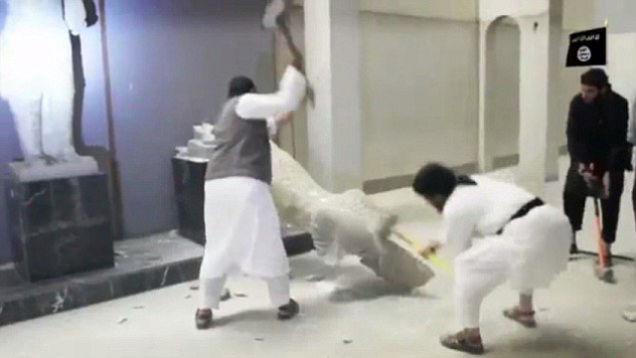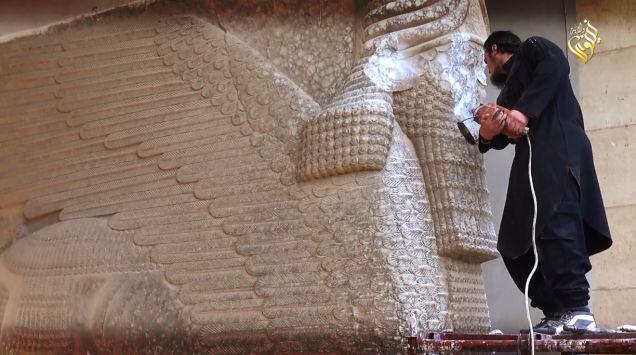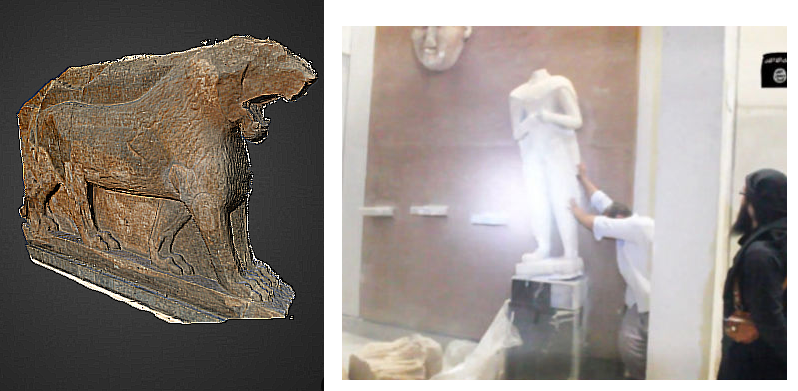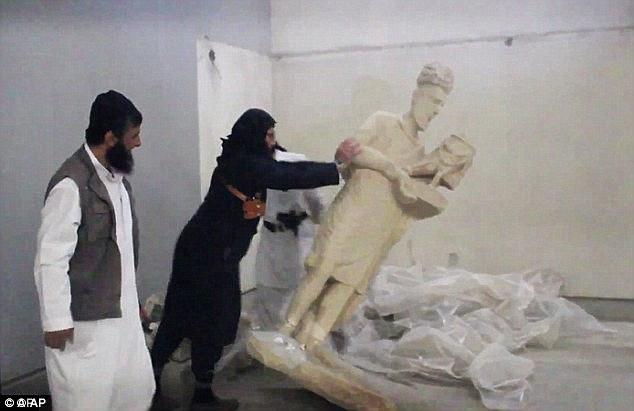 While the rest of the world watches, helplessly from the normal civilian stance, horrified, as ISIS wreaks havoc and takes lives mercilessly and publicly, I think it’s safe to say we can barely begin to imagine what it is like to live in the midst of such terrorist activity or attempt to pick up the pieces of their destruction.
While the rest of the world watches, helplessly from the normal civilian stance, horrified, as ISIS wreaks havoc and takes lives mercilessly and publicly, I think it’s safe to say we can barely begin to imagine what it is like to live in the midst of such terrorist activity or attempt to pick up the pieces of their destruction.
The human spirit is built on resiliency though, and although it’s never easy, rebuilding is often necessary after trauma, full-on war, and violent terrorist acts that serve only to instill fear and make a point that often few of us even fully understand. There is often the hope of retrieving some items that have been pillaged as well–especially smaller ones.
While the ‘cure’ for terrorism is seemingly a hopeless one with the ultimate goal being in prevention, for locals who bear the brunt of attacks, often the most positive way to move on is rebuilding. That’s often easier said than done though when priceless, ancient artifacts have been destroyed. And it does absolutely make one cringe to think about artifacts—like the ones from the Mosul Museum–that are over 3,000 years old just being smashed to pieces.
Most of us are well aware that throughout the ages, opposing factions in wartime have destroyed valuable and often religious pieces that could never be replaced, but knowing that this type of activity takes place still, now, is jarring and heartbreaking. There is the hope though that with the incredible innovation available through 3D design and 3D printing that tangible replacements of sorts can be made, as well as possible retrieval.
Recently, after an ISIS attack at the Mosul Museum in Iraq, the news was good and bad. Most of the items destroyed were replicas, but some items were originals as well. Experts have been able to assess the video footage of Jihadists smashing and toppling items, as well as going so far as to destroy them with power tools.
Antiquities expert Christopher Jones, a PhD student in ancient Near Eastern history at Columbia University in New York, states that the devastation was wrought upon Assyrian artifacts gauged to be around 3,000 years old—many being replicas—along with extremely rare and valued original sculptures from Hatra, an ancient trading city that was located near Parthia, and once a target of the Roman Empire. Jones was helped in his video assessment by Dr. Suzanne Bott, Hubert Debbasch, and Dr. Lamia al-Gailani Wer.
For the Mosul Museum, the first step in this complicated endeavor is in finding images of the items that were lost. In a project headed up by Project Mosul, any individuals who have pictures of any of the items destroyed at Mosul are being asked to send them to the volunteers heading up the project, with hopes to make 3D printed copies of the items.
Reports have been released that the most devastating losses were one, to the Assyrian lamassu, which were bulls bearing human heads and enormous wings, constructed as gates–and two, to the Hatra sculptures which are a terrible loss, representing 15 percent of all that were remaining in the world of the Hatra artworks.
“The damage by ISIS to the artistic legacy of Hatra has been catastrophic,” wrote Jones in his summation of the devastation. “This tragedy is compounded by the fact that Hatrene sculpture has been chronically understudied. Almost all of it was excavated in the 20th century and the finds never left Iraq. The primary publication of the finds is in an Arabic-language book often inaccessible in the West. Very few scholars outside of Iraq have had the opportunity to study the statues.”
“From what we can see in this video, the loss for the study the Roman and Parthian Near East is absolutely devastating.”
For 3D printing from images of the pieces that were lost, Project Mosul is composed of volunteers looking for pictures from both inside and outside the Mosul Museum. The volunteer group is headed up by the Initial Training Network for Digital Cultural Heritage, of the Marie Curie Actions training project, which is also part of the Seventh Framework Programme. Those who have images to contribute can contact the group and upload them.
The Lion of Mosul is a great example of some of the restoration work they’ve done so far, with the 3D model produced in Sketchfab (seen at bottom of article).
With the help of experts and so many volunteers and experts, the group hopes not just to make a virtual reconstruction of the items for posterity, but also to use as a tool in helping to disseminate information and images for help in recovery of looted items. Volunteers in coding are needed also as well as those who have expertise in Photoshop and the use of automated photogrammetry for making 3D models. Click here for more information.
Were you aware of the devastation on the Mosul Museum? What role do you think 3D printing will be able to play as a whole in the future for the recreation of the loss of priceless items? Tell us your thoughts in the Project Mosul, Combating ISIS forum over at 3DPB.com.
Subscribe to Our Email Newsletter
Stay up-to-date on all the latest news from the 3D printing industry and receive information and offers from third party vendors.
You May Also Like
Further Understanding of 3D Printing Design at ADDITIV Design World
ADDITIV is back once again! This time, the virtual platform for additive manufacturing will be holding the first-ever edition of ADDITIV Design World on May 23rd from 9:00 AM –...
3D Printer Maker EVO-tech Reborn as NEVO3D — Once More With Feeling
EVO-tech was a 3D printing service and original equipment manufacturer established in 2013 and based in Schörfling am Attersee, Austria. The company produced high-quality material extrusion systems featuring linear bearings,...
3D Systems Brings 3D Printed PEEK Cranial Implant to the U.S. with FDA Clearance
For more than 10 years, 3D Systems (NYSE:DDD) has worked hand-in-hand with surgeons to plan over 150,000 patient-specific cases, and develop more than two million instruments and implants from its...
CDFAM Returns to Berlin for Second Annual Symposium
The second CDFAM Computational Design Symposium is scheduled for May 7-8, 2024, in Berlin, and will convene leading experts in computational design across all scales. Building upon the first event...



































